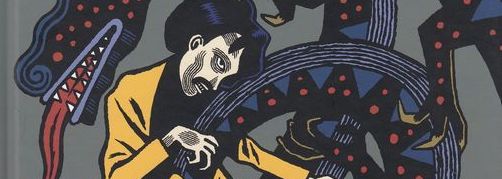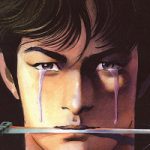L’Ascension du Haut Mal
Regions: France

L’Ascension du Haut Mal is an autobiography by David B. (the nom de plume of Pierre-François Beauchard, b. 1959). Told in the first-person, the book depicts the life of the artist since his young age into adulthood. The story itself, however, gravitates around his older brother, Jean-Christophe, and his bouts with epilepsy (the original French book uses a Middle Ages term, “the great evil”), and the book follows the development of the illness that is represented as an autonomous, metamorphic, dragon-like creature. His family tries to cope with the disease by moving in and out of a myriad of “cures,” from several conventional Western medical disciplines to the most esoteric doctrines and suspicious dietary cults. All of these temporary solutions fail, however, and to a certain extent, become a part of the problem, increasingly isolating Jean-Christophe, turning him into a reclusive, confused, shattered, and even violent person. Discussions about hereditary transmission, cultural heritage, individuality, and family solidarity ensue, making L’ascension a multi-layered, complex and dramatically rewarding masterpiece of autobiographical comics.
The identity at stake then is not only that of David’s brother, but also of the author himself as well as of those surrounding him. In fact, the book can be seen as a series of biographies dovetailed into one another, focusing on the genealogical history of the Beauchards as well as on several historical figures, thereby interweaving family stories with key events of French history. Through these embedded biographies, the book reaches beyond an autobiographical focus on the self in order to explore how collective narratives feed into one’s sense of identity.
Considered David B.’s magnum opus, the book extends many of the themes he explored in previous books: dream diaries, imaginary or unfinished book projects, and annotations about his reading experiences are reinterpreted as part of his struggle against his brother’s illness. Moreover, the author makes use of a highly fantastical imagery that is seamlessly integrated to the purported reality – representing certain characters as animals, for instance, or opening up an experience to a fantasy interpretation – which only augments the emotional urgency of his experiences. Dreams, symbols, and fantasies participate in the same visual plane as wakeful reality, complicating what makes up a person’s experience.
This blending of ontological planes of experience is underscored by the author’s extremely stylised approach to drawing. His graphic style consists of a high contrast between black and white, which constitute absolute flat areas with a sparse, significant use of hatchwork. The partition of black and white, especially in facial representations, comes to symbolize the increasing burden of the illness and its violent outbursts. This narrative integration of stylistic properties has been interpreted by some critics as a latest form of the “ligne claire,” especially taking into account its ultimate legibility.
Originally published between 1996 and 2003 by L’Association as six soft cover books, it was of paramount importance as one of the flagships of its publisher’s output, contributing decisively to the consolidation of what would become known as the French “nouvelle bande dessinée.” It was translated into English, released as a single hardbound volume in 2003 in the United States, where it helped to cement the “literary turn” of graphic novels.
–Pedro Moura and Benoît Crucifix


